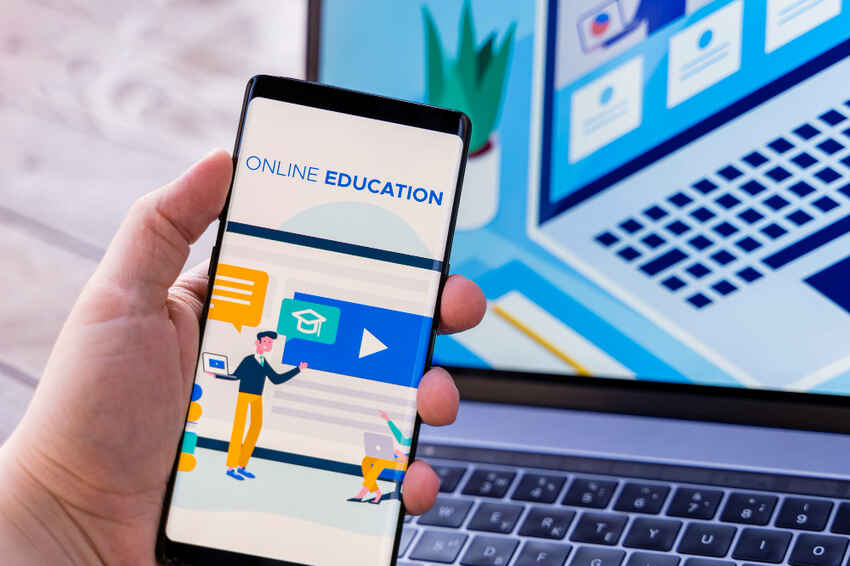Last updated on February 18th, 2025 at 06:00 pm
The impact of mobile learning has transformed the way we connect and consume information since it allows for seamless access to data. Mobile apps lie at the heart of this revolution, offering breakthrough interventions in education, enterprise, and personal productivity. Application development or porting Enterprise solutions to various mobile devices, across the global business domains, has been growing in leaps & bounds. All these users of mobile devices, like iPhones, iPads, Android phones, Windows Phones, or even eReaders like the Amazon Kindle, create a never-ending demand for more and more unique and useful mobile applications. Since this arena of mobile learning is vast with users wanting mobile applications to be simple and fast, just one nagging issue can spoil the entire experience. Dr. Ranita Ganguly’s journey in revolutionizing the mobile learning experience highlights her challenges, accomplishments, and passion for mobile computing. Her ability to engage and excite learners about the potential of mobile learning reflects her deep understanding and enthusiasm for this transformative technology. Let us discuss the best practices identified by her to help design awesome mobile learning experiences.

Use Variety of Media
Providing students with multiple options to engage with the course material is integral to reaching and engaging more people. The opportunities that mobile learning trends provide are enormous, and knowing the trends always makes a difference. Mobile learning promotes usage of videos, podcasts, text, animations, and simulated spaces. Gone are the days of paper-based learning; if we want a broad-spectrum appeal, we should provide multiple media formats. Multiplatform access to Mobile learning apps promotes higher engagement levels while putting learners’ accessibility needs first.
Integrate Social Interactions
Aspects of social learning in mobile learning are well-suited to complement training modules. Mobile learners are just one tap away from their social networks and often expect some aspect of their social capabilities on these platforms.
Mobile learning provides the benefit of learning beyond a course or session. Social tools such as forums or group chats allow learners to continue conversation, post questions, or learn from others. The co-creation of this experience provides further depth to training material and encourages knowledge acquisition. Social connections cross borders and cultures, and help build communities. This can be in the form of group projects, social network connections, or enabled discussions.
Gamify Assessments
Both quizzes and assessments are meant to evaluate students and learning materials, so best practices in mobile learning are to create engaging quizzes and assessments. Gamification is one of the most successful learning and training methods in workplaces. Research has shown that gaming increases the ability to retain and use this knowledge when a situation arises. Gamification in mobile learning courses keeps learners engaged and challenged.
Goals and rewards are incentives that encourage learners to acquire reward skills. As gamified assessments provide a fun alternative, this leads to improved engagement as opposed to lengthy reading passages or lectures. By incorporating incentives, such as goal-based challenges, interactive polls, quizzes, leaderboards, or daily streaks, learners are encouraged to engage with the course regularly.
Clear Structure Design
Since mobile learning is generally paced by learners as they process small amounts of content, a clear direction is necessary. Micro-learning focuses on short, easily digestible chunks of content that enable learners to accomplish a learning goal within a short span of time. Learner feedback suggests short nuggets as part of a learning path. Try to break up the large modules into small parts and encourage repetition and reviews, as necessary for retention. With so much information available today, it is critical to provide a logical and clear path through the material to keep learners on course. This will come with a simple, streamlined design to allow for ease of navigation
Provide Custom Feedback
The absence of personalized feedback in self-directed learning can be burdensome, but when utilized throughout a course, it can certainly be transformative. Encoding feedback can provide comfort to learners and even help them adjust any flaws that they may have made in their performance at that moment. An ideal mobile learning solution should be able to provide immediate feedback so that learners are aware of their mistakes or other approaches that may better fit their needs. An ideal scenario is when mistakes are addressed as they occur.
Blend Mobile Learning and other Formats of Training
Combining mobile learning with other resources such as coaching and webinars brings forth a comprehensive experience. Using mobile media and other formats of learning ensures that learning styles are factored in, and that learners participate in the manner of their choice. Adding resources such as one-on-one coaching and follow-up webinars, telling people what to read, and linking them to videos makes the course more significant, thereby reducing barriers to learning.
In a nutshell, these practices must be considered when designing mobile learning. Incorporating different types of media content, like videos, podcasts, and animations, accommodates different learning styles and enhances engagement. Discussions on forums and group chats initiate such social interaction that promotes collective learning beyond the course scope. Quizzes and other gamified assessments help bring motivation and challenge to a learning experience. Sections should be kept as brief as possible; this avoids providing too much information and provides the clearest and most structured design imaginable. Tailored feedback gives real-time feedback and guidance to rectify the mistake. Lastly, combining mobile learning with other formats such as webinars and coaching, adds variety and allows a holistic and inclusive learning experience.
















